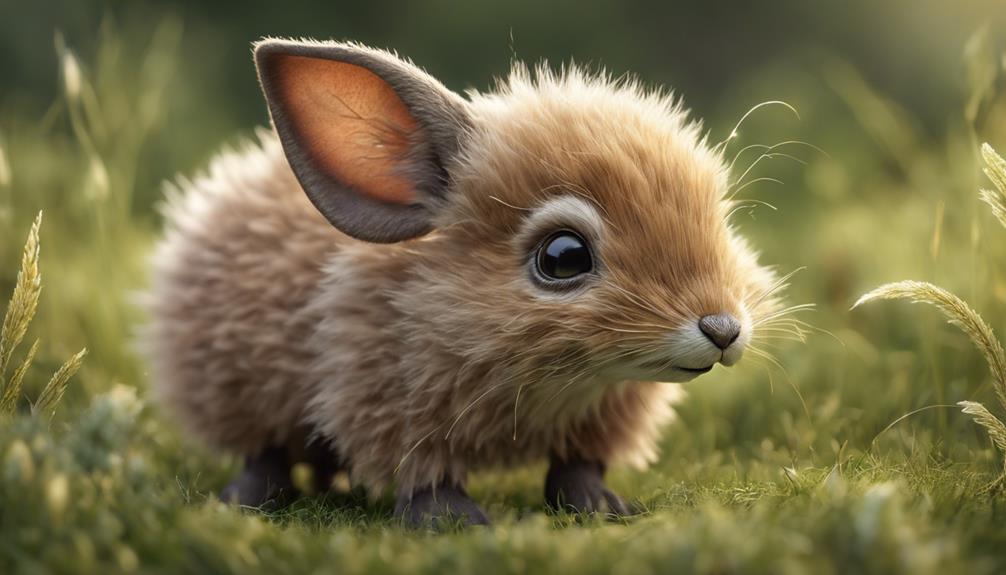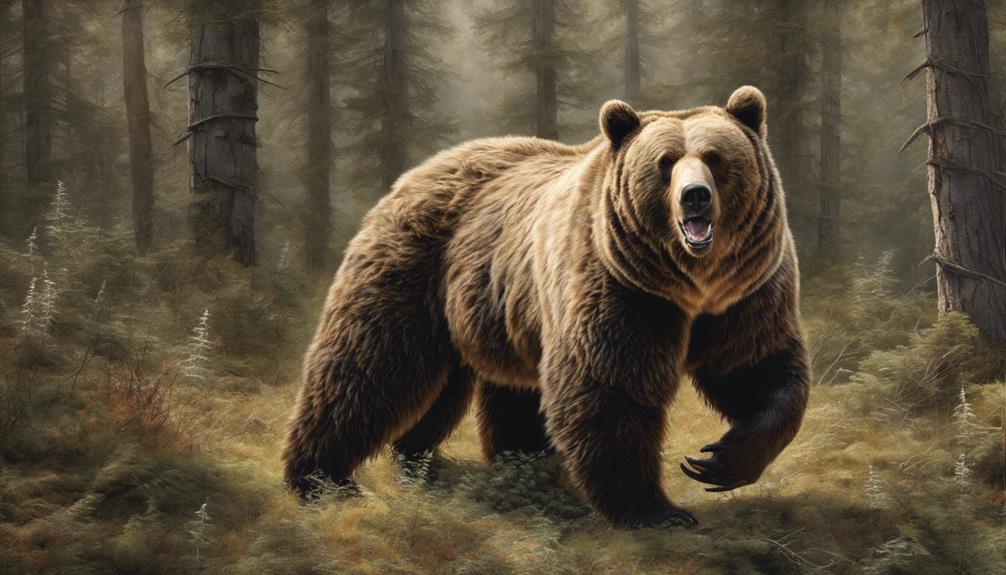Animals similar to rabbits, like hares and pikas, also herbivores, eat plants just like rabbits. Hares and pikas are in the Lagomorph family too, having unique features setting them apart. Hares, for example, have longer legs for running swiftly compared to rabbits. Pikas, on the other hand, live in rocky habitats distinguished from rabbits. Each species has adaptations for their specific environments. If you want to discover more about their fascinating traits and habits, keep exploring the world of lagomorphs!
Key Takeaways
- Pikas, similar to rabbits, are lagomorphs with herbivorous diets and distinctive physical features.
- Hares share traits with rabbits but have longer legs, larger bodies, and different social behaviors.
- Guinea pigs resemble rabbits in some ways with herbivorous diets and similar appearances.
- Cottontail rabbits have resemblances to rabbits in diet and habitat preferences.
- Some rodents like degus share characteristics with rabbits such as herbivorous diets and social behavior.
Lagomorph Family Overview
Diving into the Lagomorph family, we find a fascinating group of herbivorous mammals including rabbits, hares, and pikas. These mammals share common characteristics such as having two pairs of upper incisors that help them efficiently feed on plants. While rabbits and hares belong to the Leporidae family within the Lagomorph order, pikas are part of the Ochotonidae family and have unique adaptations for thriving in alpine environments.
Rabbits, known for their soft fur and twitching noses, are social animals that live in groups called colonies. They're prolific breeders, with a high reproductive rate to guarantee their survival in the wild. Hares, on the other hand, are solitary creatures that are built for speed, with longer legs than rabbits to escape predators efficiently. Pikas, resembling small rabbits with round ears, are adapted to cold climates and are known for their distinctive high-pitched calls.
Understanding the diversity within the Lagomorph family sheds light on the unique adaptations and behaviors of these fascinating mammals.
Physical Characteristics Comparison
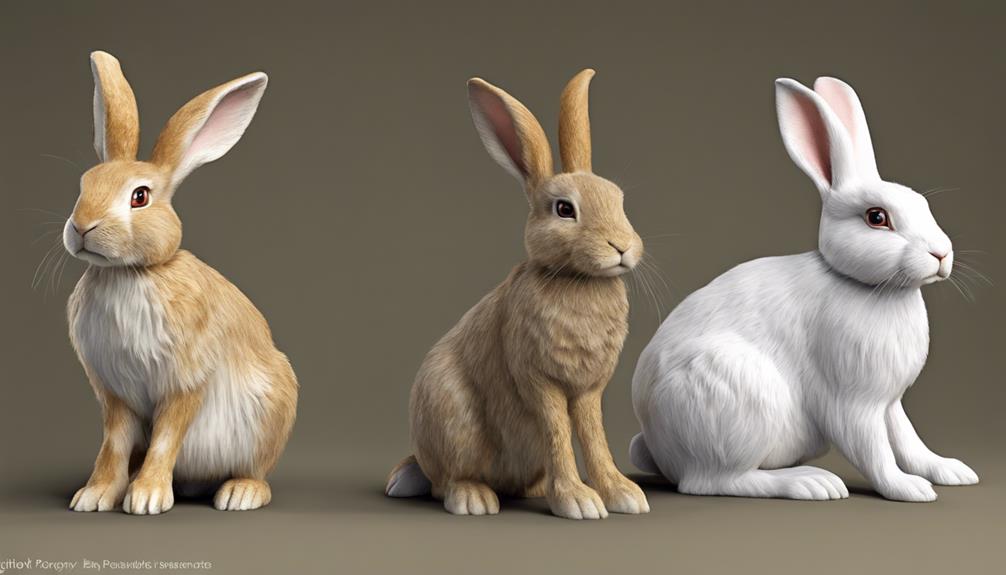
When comparing animals similar to rabbits like hares and pikas, we can observe differences in size and shape, as well as fur texture. These characteristics play an essential role in their survival and adaptation to their environments.
Understanding these distinctions will help us appreciate the diversity within the lagomorph family.
Size and Shape
In comparing the physical characteristics of animals similar to rabbits, we observe variations in size, shape, ear length, body proportions, tail types, and fur characteristics.
Some creatures resembling rabbits may be larger or smaller in size, with differing body shapes that set them apart. Ears play a significant role, varying in length from short to long among these animals.
Additionally, the diversity extends to body proportions, where some have elongated bodies while others are more compact. Tail types can differ too, from bushy tails to short or nonexistent tails.
Moreover, these creatures exhibit a wide array of fur colors, ranging from earthy tones to vibrant hues, adding to their unique and diverse appearances.
Fur Texture
As I explore the various animals similar to rabbits, one notable aspect that distinguishes them is the diverse fur textures they exhibit. Chinchillas, known for their incredibly soft fur that's thicker than a rabbit's coat, stand out with their luxurious feel.
Snowshoe hares, on the other hand, showcase a fascinating trait where their fur changes color seasonally to adapt to their surroundings. These hares demonstrate a unique way in which fur texture can aid in survival.
Considering the range from the soft fur of Chinchillas to the adaptive color-changing fur of Snowshoe hares, it becomes evident that fur texture plays an essential role in the lives of animals similar to rabbits, offering both comfort and camouflage in their respective habitats.
Habitat Diversity and Adaptations

Exploring the diverse habitats in which rabbits have adapted reveals their remarkable ability to thrive in various environments. Rabbits can be found throughout forests, grasslands, and even arid regions. Their adaptations are key to their survival.
For instance, rabbits in arid regions have evolved to conserve water efficiently. Their long legs help them navigate through different terrains, whether it's the dense vegetation of a forest or the open spaces of a grassland. Each species of rabbit has unique features tailored to its specific habitat.
The cottontail rabbit, for example, thrives in open areas with dense vegetation for cover, while the Arctic hare has a thick fur coat to withstand cold temperatures. In contrast, desert-dwelling rabbits like the brush rabbit have developed mechanisms to withstand high temperatures.
Even in extreme environments like high-altitude volcanic regions, rabbits like the volcano rabbit have adapted to the unique challenges they face. Rabbits truly showcase the diversity of habitats they can inhabit and the remarkable adaptations that allow them to thrive.
Feeding Habits and Digestive System

Moving through the various habitats where animals akin to rabbits reside, one can observe their herbivorous nature and specialized digestive systems that excel at processing tough plant material. These rabbit-like creatures, found in various regions including South America, belong to the order (Rodentia) and are a fascinating group of mammals known for their efficient utilization of plant-based diets.
To better understand their feeding habits and digestive systems, let's explore a comparison table:
| Feeding Habits | Digestive System |
|---|---|
| Herbivores that feed on grasses, plants, and bark | Specialized digestive systems adapted for extracting nutrients from tough plant material |
| Engage in coprophagy to maximize nutrient absorption | Efficient at processing high-fiber diets |
| Obtain essential vitamins and minerals from food sources | Excel at breaking down cellulose and other plant components |
These animals showcase remarkable adaptations that enable them to thrive on plant-based diets, emphasizing the importance of their unique feeding habits and digestive systems in their respective ecosystems.
Ecological Importance of Lagomorphs
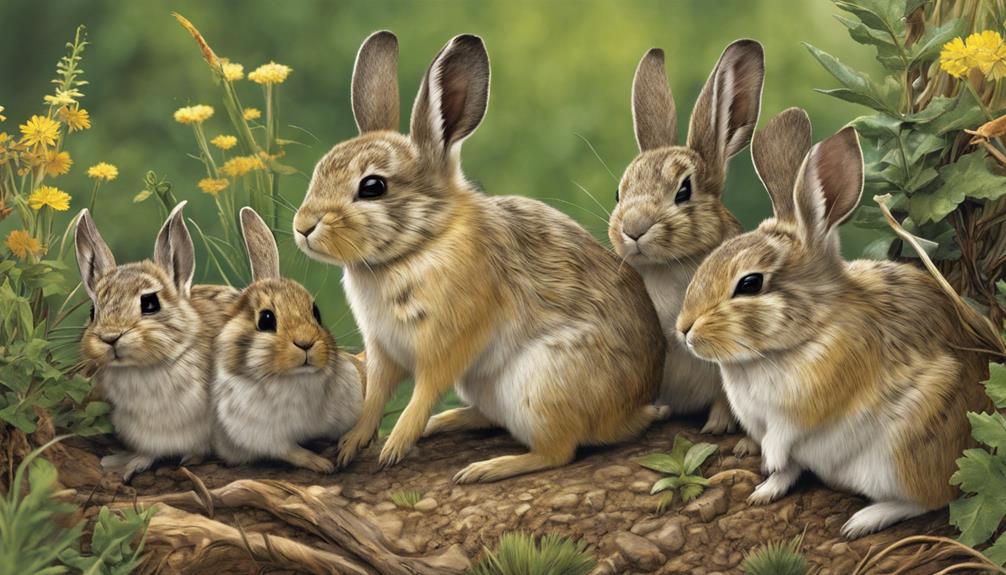
Lagomorphs, as herbivores, play an essential role in shaping ecosystems through their influence on plant populations and nutrient cycling.
As herbivores, lagomorphs contribute greatly to the intricate predator-prey dynamics within ecosystems. They serve as a vital food source for various carnivores, thereby balancing the population of both predators and prey.
- Lagomorphs' feeding habits have a direct impact on the vegetation structure of their habitats. By selectively consuming certain plant species, they influence the diversity and distribution of vegetation, creating a mosaic of plant communities in their environment.
- Through their role as herbivores, lagomorphs help in nutrient cycling within ecosystems. Their consumption of plant material and subsequent re-ingestion of fecal pellets aid in maximizing nutrient extraction from their diet, contributing to the overall health and balance of the ecosystem.
- The presence of lagomorphs in food webs supports the stability and resilience of ecosystems, highlighting their importance in maintaining the delicate ecological balance.
Conservation Efforts and Challenges
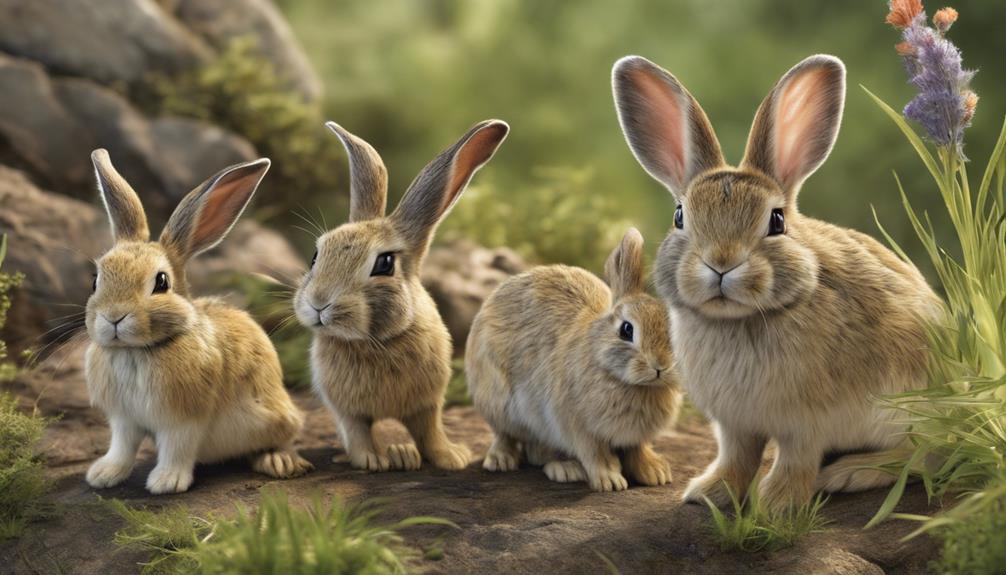
Given the critical role that animals similar to rabbits play in ecosystem dynamics, it is imperative to address the conservation efforts and challenges they face in the present day. Conservation efforts for these creatures focus on protecting habitats and combating threats like habitat loss and climate change. However, challenges such as human-wildlife conflict, poaching, and competition with invasive species persist, making conservation a complex task. Conservation organizations are actively working on raising awareness, conducting research, and implementing innovative strategies to safeguard species akin to rabbits.
To emphasize the importance of conservation efforts, consider the following table:
| Conservation Efforts | Challenges |
|---|---|
| Safeguarding habitats | Human-wildlife conflict |
| Increasing awareness | Poaching |
| Collaborating with stakeholders | Invasive species competition |
Efforts to conserve these animals in the South involve collaboration with local communities, governments, and other stakeholders to ensure long-term protection. Monitoring population trends, implementing sustainable practices, and establishing protected areas are pivotal components of conservation initiatives for species resembling rabbits.
Frequently Asked Questions
What Animal Is the Closest Relative to a Rabbit?
The closest relative to a rabbit is the hare. They share similar physical features and behaviors. Both are lagomorphs with unique dental characteristics. Hares and rabbits diverged from a common ancestor, making them closely related.
What Are Relatives of Rabbits?
Hares and pikas, close relatives of rabbits, share similar dental features. Lagomorphs, distinct from rodents, have specialized digestive systems. Appreciating the diversity within Lagomorpha helps understand their unique adaptations and evolutionary relationships.
What Can You Compare a Bunny To?
When comparing a bunny, one might think of its adorable hopping, fluffy fur, and twitching nose. These endearing traits make bunnies unique companions, adding joy and warmth to daily life with their playful antics and gentle nature.
What Animals Are Related to the Domestic Rabbit?
I'll share some insights on animals related to domestic rabbits. Pikas, hares, cottontail rabbits, and European wild rabbits are close relatives. Genetic studies show a strong evolutionary connection between domestic and wild rabbit species.
Are Hippos Related to Rabbits or Similar in Any Way?
No, hippos are not related to rabbits in any way. They are actually more closely related to whales and porpoises. However, it is interesting to note that despite their large size, hippos are actually quite agile and can run at speeds of 30 km/h, making them hippos faster than horses on land.
Conclusion
In summary, animals similar to rabbits, such as hares and pikas, play an essential role in various ecosystems. Their diverse habitats and unique adaptations make them important contributors to their environments.
By understanding their feeding habits and digestive systems, we can appreciate the ecological significance of these lagomorphs.
Conservation efforts are vital to protecting these creatures and preserving their habitats for future generations. Like a web of interconnected links, each species in the lagomorph family adds a valuable piece to the intricate puzzle of nature.
